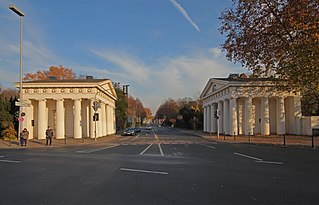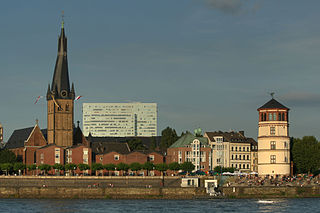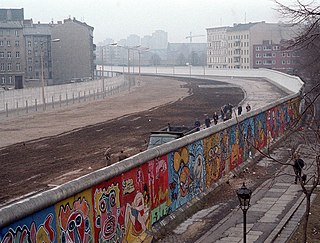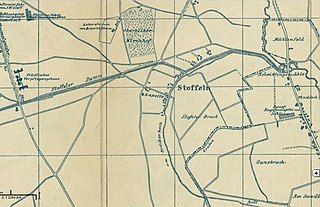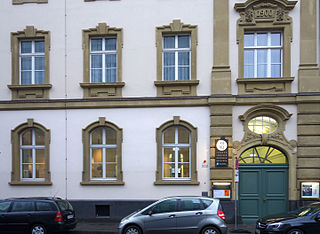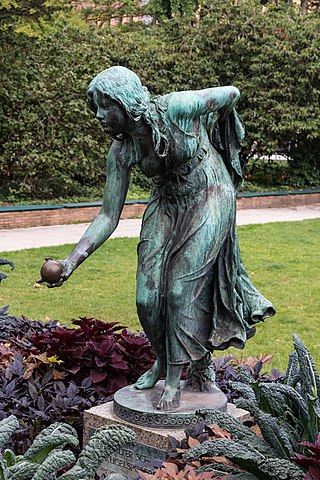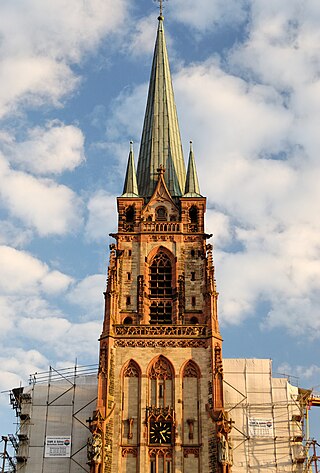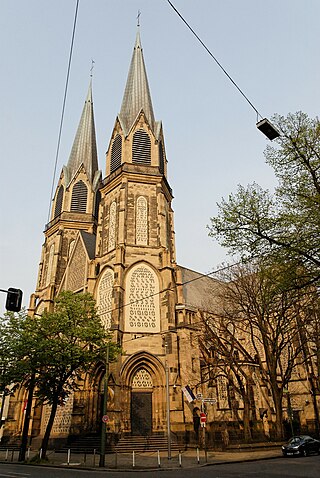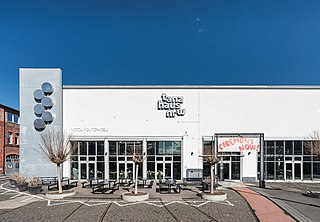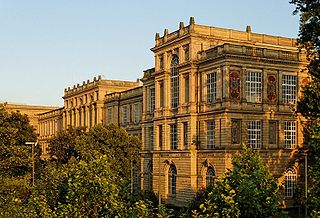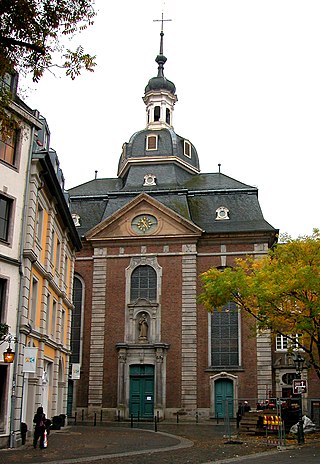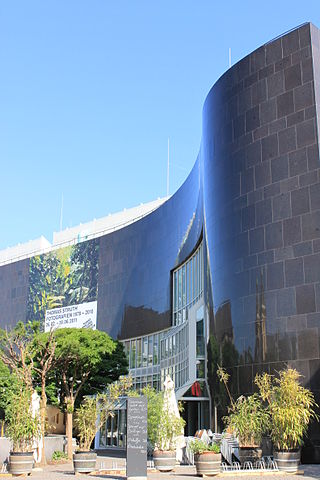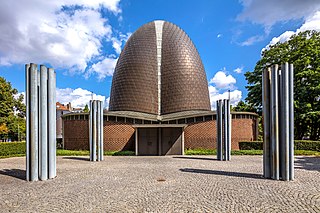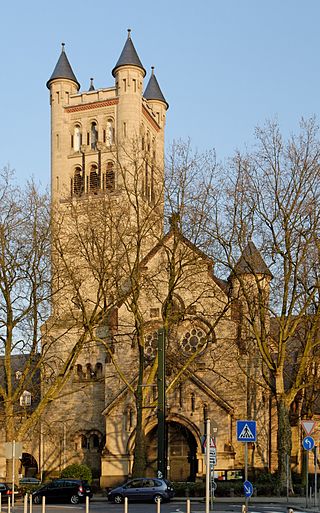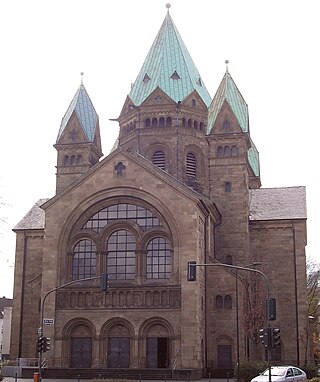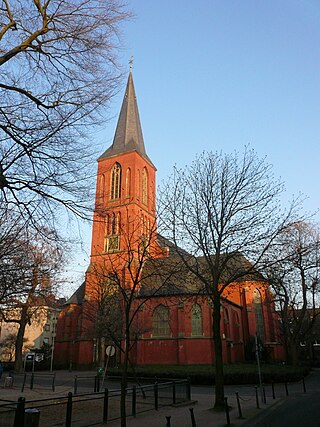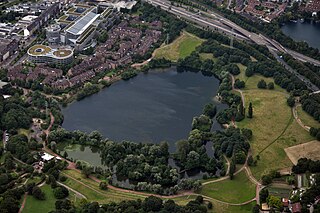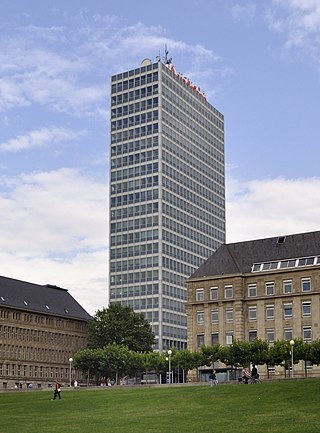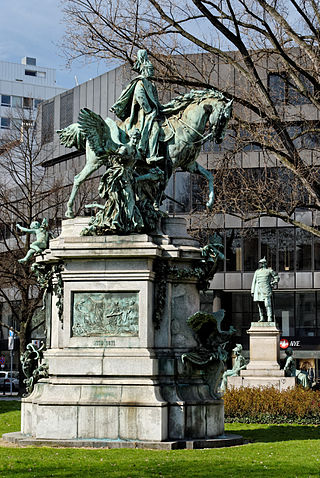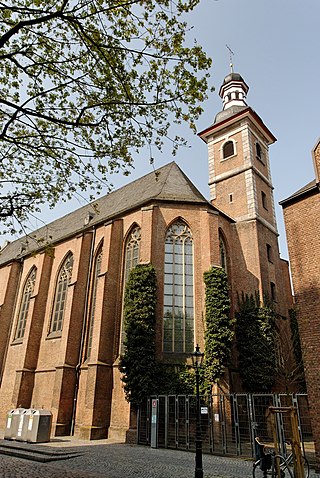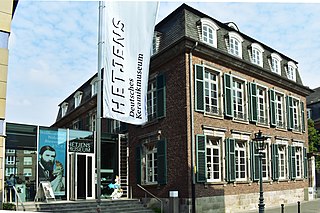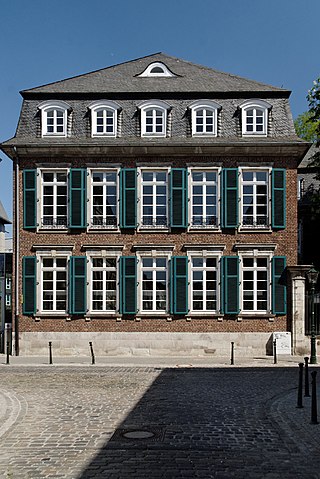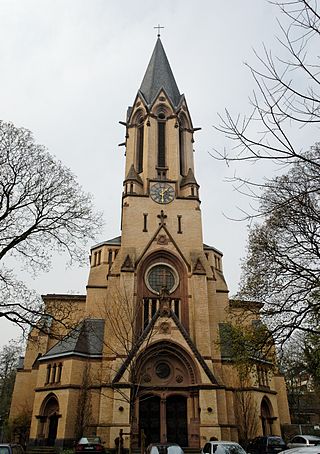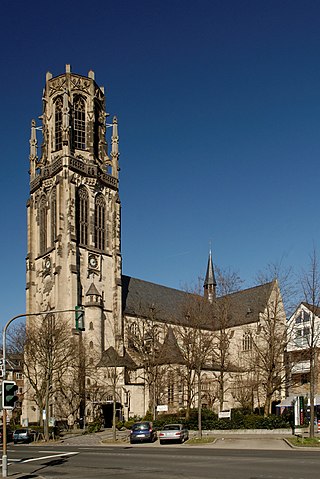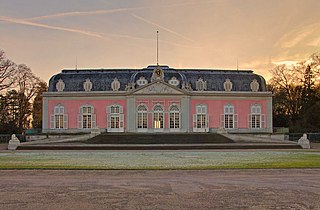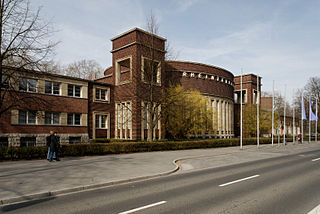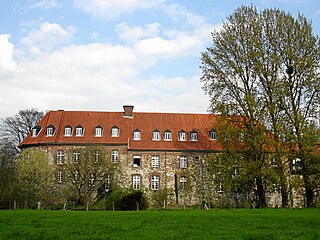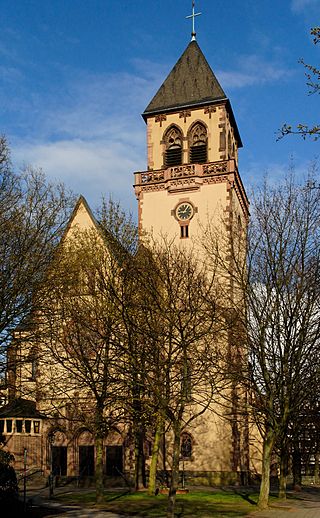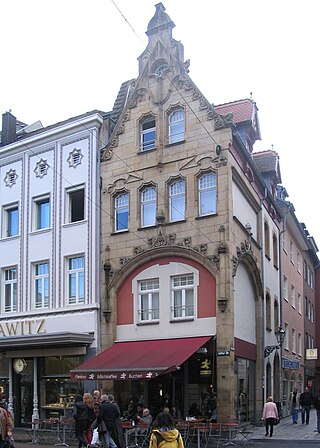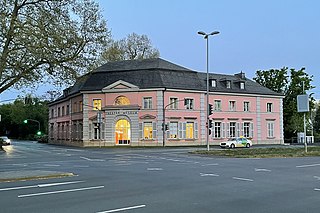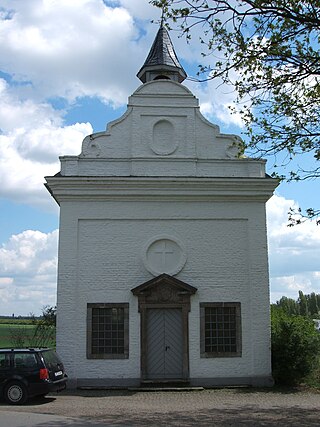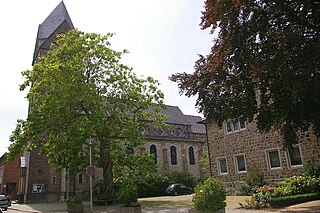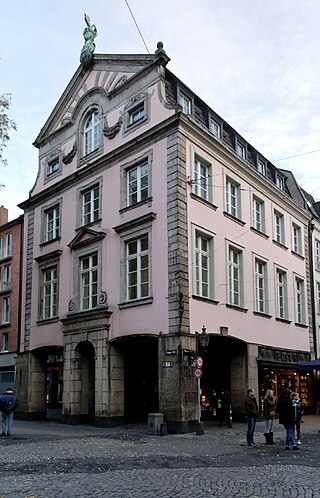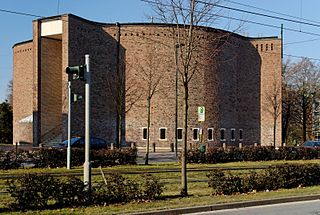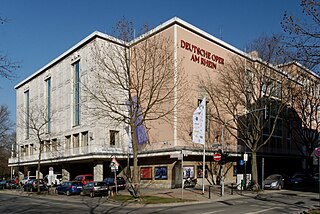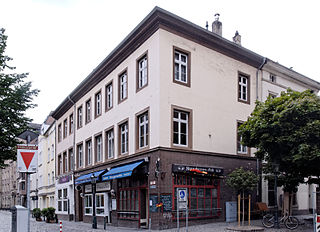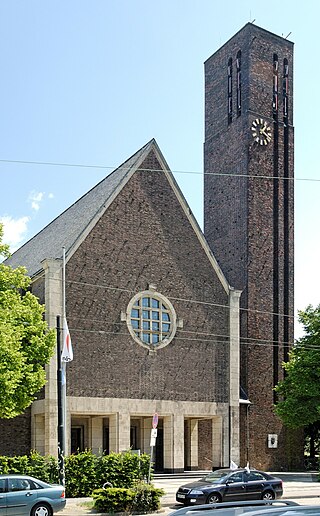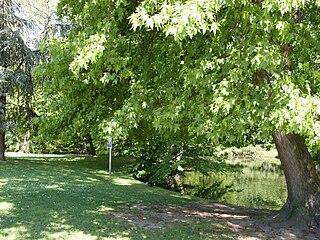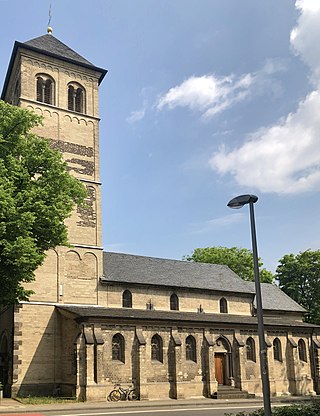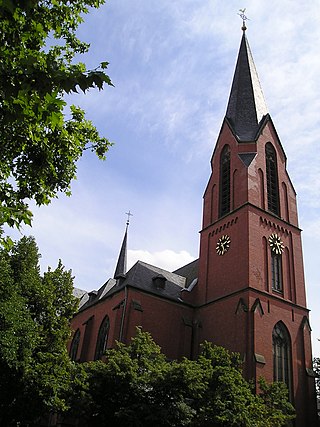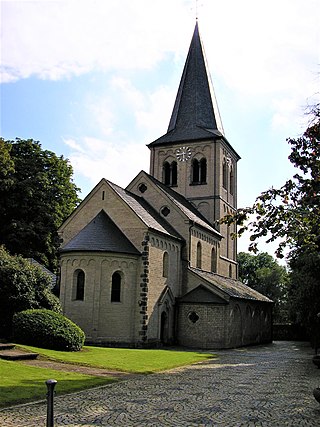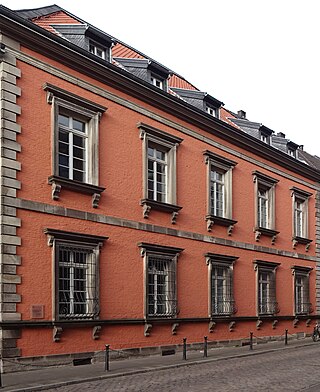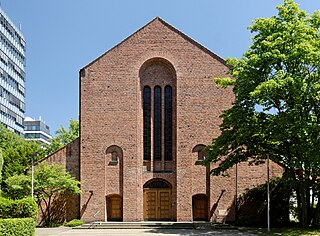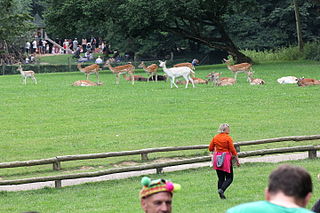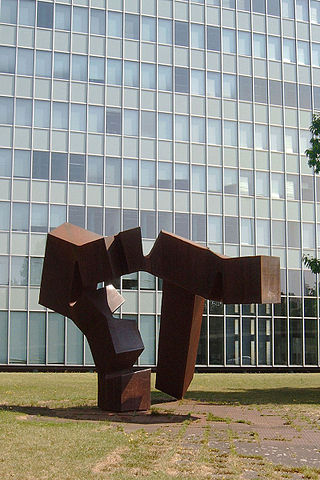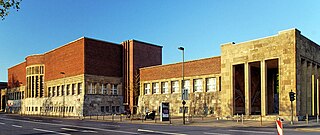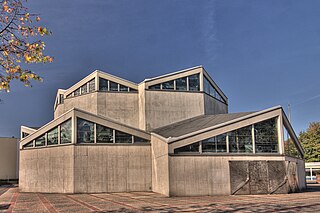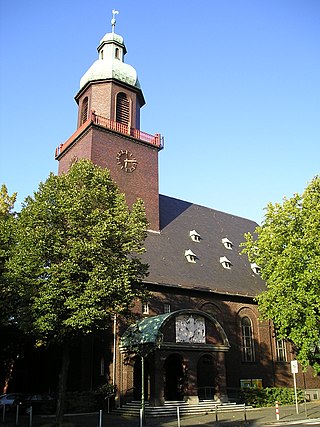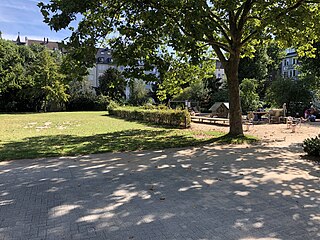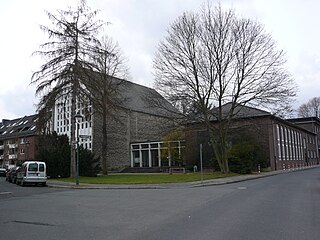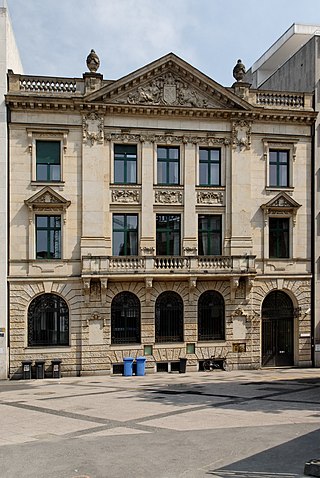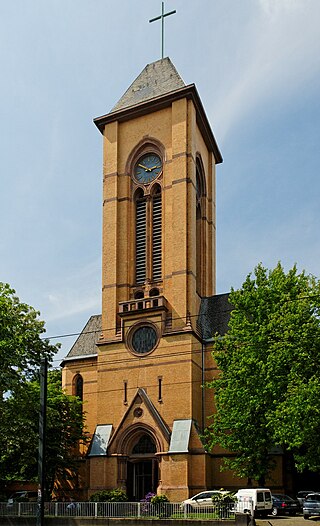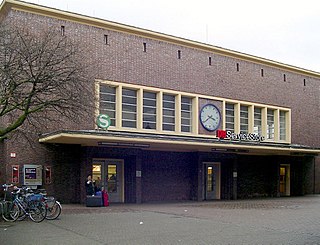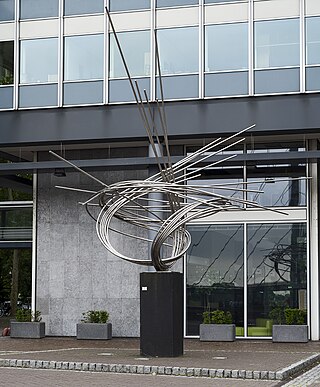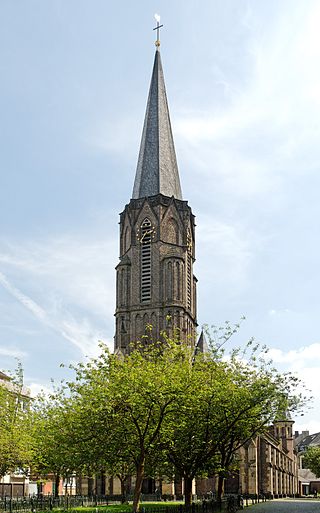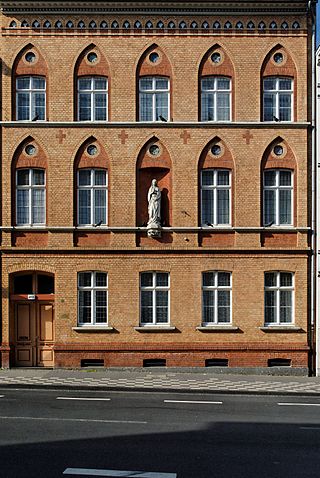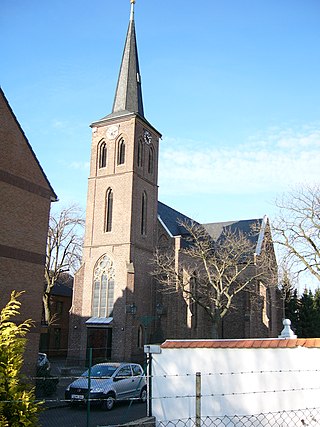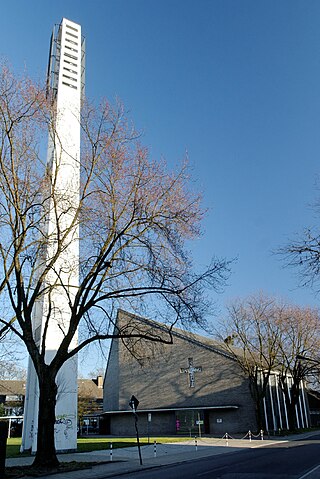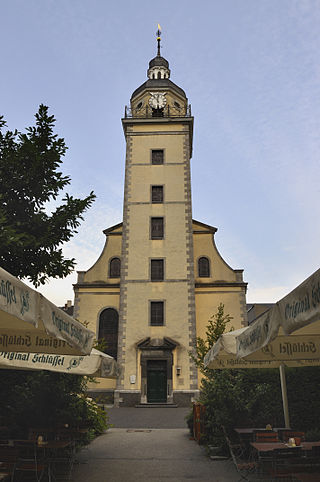100 Sights in Dusseldorf, Germany (with Map and Images)
Legend
Premium Sights
Book tickets, guided tours and activities in Dusseldorf.
Guided Free Walking Tours
Book free guided walking tours in Dusseldorf.
Welcome to your journey through the most beautiful sights in Dusseldorf, Germany! Whether you want to discover the city's historical treasures or experience its modern highlights, you'll find everything your heart desires here. Be inspired by our selection and plan your unforgettable adventure in Dusseldorf. Dive into the diversity of this fascinating city and discover everything it has to offer.
Sightseeing Tours in DusseldorfActivities in Dusseldorf
The Nordpark in Düsseldorf is a public green space in the Stockum district. It was planned in 1936 for the Reich Exhibition Schaffendes Volk, a propaganda exhibition of the National Socialists, and opened in 1937. The main entrance is on Kaiserswerther Straße, another entrance on the Rhine side on Rotterdamer Straße.
From 1880 to the 1930s, the Ständehaus was the parliament building of the Provincial Parliament of the Prussian Rhineland in Düsseldorf. From 1949 to 1988, it then served as a meeting venue for the North Rhine-Westphalian state parliament. Today, as the K21 exhibition building, it houses the Contemporary Art Department of the Kunstsammlung Nordrhein-Westfalen.
The Ratinger Tor is the last and only remaining city gate of the original city of Düsseldorf. However, the current building is not the medieval city gate, but a customs gate that was built between 1811 and 1815 in the classicist style. The need for a new building arose from the demolition of the fortifications stipulated in the Treaty of Lunéville, to which the old gate fell victim. The new Ratinger Tor was moved by about 115 m to the east, which made it possible to extend Ratinger Straße by 60 m and to create a boulevard, today's Heinrich-Heine-Allee.
4. St. Lambertus
St. Lambertus is one of four Roman Catholic churches in Düsseldorf's Old Town on Stiftsplatz. It is the parish church of the enlarged parish of St. Lambertus Düsseldorf, which was created in 2011 by the merger of the parishes of St. Lambertus, St. Maximilian and St. Mariä Empfängnis. Their church consecration festival forms the spiritual background of the "Largest Funfair on the Rhine".
Wikipedia: St. Lambertus (Düsseldorf) (DE), Website, Heritage Website
5. St. Lambertus
The Catholic parish church of St. Lambertus in the Düsseldorf district of Kalkum forms the centre of the old town centre and dates back to the 11th century. The parish of the same name belongs to the Catholic parish community of Angerland/Kaiserswerth.
The Rheinturm is a 240.5-metre-high (789 ft) concrete telecommunications tower in Düsseldorf, capital of the federal state (Bundesland) of North Rhine-Westphalia, Germany. Construction commenced in 1979 and finished in 1981. The Rheinturm carries aerials for directional radio, FM and TV transmitters. It stands 172.5 metres high and houses a revolving restaurant and an observation deck at a height of 168 metres. It is the tallest building in Düsseldorf.
7. Königsallee
The Königsallee is an urban boulevard in Düsseldorf, state capital of North Rhine-Westphalia, Germany. The Königsallee is noted for both the landscaped canal that runs along its center, as well as for the fashion showrooms and luxury retail stores located along its sides.
8. Stück der Berliner Mauer
The Berlin Wall was a guarded concrete barrier that encircled West Berlin from 1961 to 1989, separating it from East Berlin and the German Democratic Republic. Construction of the Berlin Wall was commenced by the government of the GDR on 13 August 1961. It included guard towers placed along large concrete walls, accompanied by a wide area that contained anti-vehicle trenches, beds of nails and other defenses. The primary intention for the Wall's construction was to prevent East German citizens from fleeing to the West.
9. Ehrenhof-Ensemble
In the North Rhine-Westphalian state capital of Düsseldorf, the Ehrenhof, is the name given to an expressionist ensemble of buildings and gardens that was created for the GeSoLei exhibition in 1926. Today, as a museum, it encloses an inner courtyard with the buildings of the Kunstpalast and the NRW Forum and extends axially over a garden parterre to the Tonhalle Düsseldorf, a concert and multi-purpose hall covered with a dome.
10. Gedenkstein Hundsburg
Stoffeln is a desert in the Düsseldorf districts of Bilk, Oberbilk and Wersten in the districts 3 and 9. On the site of the former village, there is now an allotment garden adjacent to Düsseldorf's Südpark, part of the Stoffeler cemetery and newer residential buildings north and south of today's Werstener Straße. Parts of the Südpark and the campus of the Heinrich Heine University Düsseldorf as well as the University Hospital Düsseldorf are located on the "Gemarkung Stoffeln", which still exists in the land register.
11. Mahn- und Gedenkstätte für die Opfer der nationalsozialistischen Gewaltherrschaft
The Düsseldorf Memorial for the Victims of National Socialist Tyranny is a cultural institute of the state capital of Düsseldorf. It is a museum, research facility and archive. The house was opened in 1987 and has since been dedicated to the memory of Düsseldorf's victims and persecuted by the Nazi regime. It is located in the western part of the historic Stadthaus in the old town and, since a thorough renovation and its reopening in May 2015, has been showing the permanent exhibition "Düsseldorf Children and Young People under National Socialism".
12. Die Kugelspielerin
The Ball Player is a sculpture by the sculptor Walter Schott and is considered his main work. It was built in Berlin between 1895 and 1897. A life-size bronze cast stands in the flower garden on Königsallee in Düsseldorf, other art casts are in Mannheim and Langen (Hesse), a copy in Berlin-Köpenick. A marble setting is preserved in the park of Gut Waltersdorf near Heideblick. In addition, there are a large number of statuettes of the figure, in bronze, chryselephantine and Meissen porcelain.
13. Basilika St. Margareta
St. Margareta is a Catholic parish church in Düsseldorf-Gerresheim, Germany. Until 1803, the basilica was the collegiate church of the Gerresheimer Frauenstift, which was built as early as the 9th century and was one of the oldest canoness convents in the Archdiocese of Cologne. Since 1 January 2011, the former parishes of St. Cäcilia, St. Katharina, St. Maria vom Frieden, St. Reinold and St. Ursula in the east of Düsseldorf have also belonged to the parish of the same name.
Wikipedia: Basilika St. Margareta (DE), Website, Heritage Website
14. Galerie Schmela
Galerie Schmela in Düsseldorf was a gallery founded in 1957 by the art dealer Alfred Schmela. It is considered one of the most important and first private art galleries of the post-war period in the Federal Republic of Germany. The gallery house, which opened in 1971 and is currently called the Schmela House, has served as the third location for exhibitions for the Kunstsammlung Nordrhein-Westfalen since November 2009 and was rented to the gallery owner Hans Mayer and his son Max from summer 2020.
15. St. Peter
The neo-Gothic Catholic parish church of St. Peter in Düsseldorf-Unterbilk on the church square was built according to designs by the architect Caspar Clemens Pickel and consecrated in 1898. It is one of the largest churches in the state capital of Düsseldorf. The parish of the same name belongs to the pastoral care area of Unter- and Oberbilk, Friedrichstadt and Eller-West in the Archdiocese of Cologne.
16. Heine Haus
The Heine Haus is a cultural institution in Düsseldorf's old town, located in the building Bolkerstraße 53, where Heinrich Heine's birthplace was located until about 1821. The house, which has initially been considered a centre for literature since 2006 and has been fulfilling its function as the "Heine Haus Literaturhaus Düsseldorf" since 2017, is dedicated to the mediation and promotion of German-language and international contemporary literature. It is run in a public-private partnership between the state capital of Düsseldorf, the Förderverein Heine Haus e.V. and the literary shop Müller & Böhm, which is located in the front area of the building. In the rear area there is an event room with a literature café.
Wikipedia: Heine Haus (Düsseldorf) (DE), Website, Heritage Website
17. St. Mariä Empfängnis
The Roman Catholic Church of St. Mary's Immaculate Conception – also known as St. Mary's Church – was built between 1894 and 1896 according to plans by the Mainz cathedral master builder Ludwig Becker. It is located opposite the loop of Tonhallenstraße in Oststraße in Düsseldorf's city centre. The three-aisled basilica with the double-tower façade was designed in the cathedral style and is a typical example of Rhenish neo-Gothic. The parish belongs to the parish of St. Lambertus in the Düsseldorf city deanery of the Archdiocese of Cologne. In 2011, the merger with the old town community took place to form the parish of St. Lambertus.
18. tanzhaus nrw
The Tanzhaus NRW in Düsseldorf is an institution for dance founded in 1998 that offers a comprehensive concept of presentation, production and participation in the field of dance. The premises at Erkrather Straße 30, an old tram depot, house stage performances, professional dance training, the development of productions as part of choreographer residencies and a variety of further training opportunities in the context of courses and workshops under one roof. The cultural training programme of Tanzhaus NRW, which is aimed at beginners, advanced dancers and professional dancers across generations, reaches an average of 3600 visitors per week.
19. Kunstakademie
The building of the Academy of Fine Arts at Eiskellerstraße 1 in Düsseldorf-Altstadt was built between 1875 and 1879 by Hermann Riffart in the historicist style of the Italian Renaissance. On the Rhine side of the building is a modern studio building of the art academy designed by Rudolf Schwarz.
Wikipedia: Kunstakademie Düsseldorf (Gebäude) (DE), Heritage Website
20. St. Maximilian
The Catholic Church of St. Maximilian, today usually called Maxkirche, in the Düsseldorf district of Carlstadt is a late Baroque church that emerged from a Franciscan monastery that was abolished in 1804. The monastery, whose living and utility rooms were located in the immediately adjacent Maxhaus, was founded in the 17th century, and the current church was built in the 18th century.
Wikipedia: Maxkirche (Düsseldorf) (DE), Website, Heritage Website
21. K20 - Kunstsammlung NRW
The Kunstsammlung Nordrhein-Westfalen is the art collection of the German Federal State of North Rhine-Westphalia, in Düsseldorf. United by this institution are three different exhibition venues: the K20 at Grabbeplatz, the K21 in the Ständehaus, and the Schmela Haus. The Kunstsammlung was founded in 1961 by the state government of North Rhine-Westphalia as a foundation under private law for the purpose of displaying the art collection and expanding it through new acquisitions.
22. St. Rochus
The Catholic Church of St. Rochus is located at Rochusmarkt 5 in the Düsseldorf district of Pempelfort. It is the successor to the Rochus Chapel, which was demolished at the end of the 19th century. The parish of the same name was founded in 1890/1891 and dissolved on 1 January 2013 by joining its historic "mother parish" Holy Trinity.
23. St. Antonius
The Catholic Church of St. Antonius is a landmark of the Düsseldorf district of Oberkassel and is located in a central warehouse not far from the Oberkassler Bridge on Luegallee. The patron saint of the church is Anthony of Padua.
Wikipedia: St. Antonius (Düsseldorf-Oberkassel) (DE), Heritage Website
24. Mannesmann-Haus
The Mannesmann House, also known as the Behrensbau, is a former administrative building in Düsseldorf, Germany. It was built from 1911 to 1912 according to a design by the architect Peter Behrens for the headquarters of Mannesmannröhren-Werke AG and is one of the early large administrative buildings in Düsseldorf.
25. Kreuzkirche
The Kreuzkirche is a church building of the Protestant parish of Düsseldorf-Mitte in the district of Pempelfort on the borders with Golzheim and Derendorf. It was built in the Neo-Romanesque style, the style preferred by Kaiser Wilhelm II for church building.
Wikipedia: Kreuzkirche (Düsseldorf-Pempelfort) (DE), Website, Heritage Website
26. Sankt Marien koptisch-orthodoxe Kirche
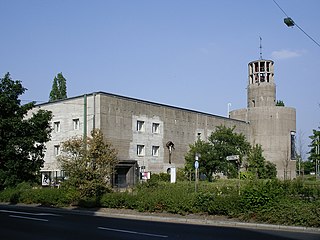
The former Roman Catholic bunker church of St. Sacrament, since 2015 Coptic parish of St. Maria, in the Düsseldorf district of Heerdt was originally a high-rise bunker from the Second World War, which offered space for around 2300 people on four floors. The listed building is thus a unique place of worship in the world and has also been aptly described as the "most stable church in the world". Today it is a church, memorial and art venue in one.
Wikipedia: Bunkerkirche Sankt Sakrament (Düsseldorf) (DE), Website
27. St. Gertrud
The Catholic parish church of St. Gertrud in the Eller district of Düsseldorf is a neo -Gothic church building. The church located at the Gertrudisplatz preceded three places of worship at other locations. The parish of the same name was founded in 1624 and is now part of the Eller-Lierenfeld parish community, which has existed since 2000.
28. Südpark
With an area of 70 hectares, Südpark is the largest and most visited park in the North Rhine-Westphalian state capital of Düsseldorf. It was created according to designs by the Südpark planning group for the Federal Garden Show in 1987 by expanding the existing Volksgarten with new parks laid out on former fallow land. The resulting Südpark consists of three differently designed areas.
29. Mannesmann-Hochhaus
The Mannesmann high-rise is an administrative building on Mannesmannufer in Düsseldorf's Carlstadt district. It was designed and built between 1956 and 1958 by the architects Egon Eiermann and Paul Schneider-Esleben, after they had won an architectural competition in 1954. The original client was Mannesmann AG, which was taken over by Vodafone in 2000. Hochtief was involved in the construction as general contractor. Together with the Dreischeibenhaus, it is one of the first modern high-rise buildings in Germany. It stands for the time of the so-called economic miracle, in which private companies significantly changed the city skyline of Düsseldorf with high-rise buildings in the style of post-war modernism.
30. Kaiser-Wilhelm-Denkmal
The Kaiser Wilhelm Monument in Düsseldorf is one of numerous Kaiser Wilhelm monuments that were erected during the German Empire and glorifies Wilhelm I as its "founder of the Empire" and as the victor over the Second Empire.
Wikipedia: Kaiser-Wilhelm-Denkmal (Düsseldorf) (DE), Heritage Website
31. Kreuzherrenkirche
The Church of the Knights of the Cross was initially a monastery church of the Order of the Knights of the Cross. The building, located in the old city centre of Düsseldorf on the corner of Ursulinengasse and Ratinger Straße, now serves the St.-Ursula-Gymnasium as a school church and auditorium and is not open to the public.
Wikipedia: Kreuzherrenkirche (Düsseldorf) (DE), Heritage Website
32. Heilige Dreifaltigkeit
The Catholic parish of the Holy Trinity, founded in 1691 in the Düsseldorf district of Derendorf, is the oldest parish outside the former city walls of Düsseldorf that still exists today. The original parish church was built between 1692 and 1693, and the current church was built between 1892 and 1893.
33. Hetjens-Museum
Das Hetjens – Deutsches Keramikmuseum ist ein am 9. Mai 1909 gegründetes Düsseldorfer Museum für Keramikgeschichte. Aufgrund der bis zu 8000 Jahre alten und aus allen Teilen der Welt stammenden Stücke seiner Sammlung gilt es als das universellste Institut seiner Art und ist regelmäßig mit Leihgaben im In- und Ausland vertreten.
34. Auferstehungskirche
The Protestant Church of the Resurrection in Düsseldorf-Oberkassel, on the corner of Arnulfstraße and Quirinstraße, is an important architectural testimony to Art Nouveau that points to the Rhenish brick architecture of the 1920s. It is a listed building. It was built between 1913 and 1914 according to a design by the Düsseldorf architects Rudolf Wilhelm Verheyen and Julius Stobbe and inaugurated on Ascension Day 1914.
Wikipedia: Auferstehungskirche (Oberkassel) (DE), Website, Heritage Website
35. Palais Nesselrode
The Palais Nesselrode at Schulstraße 4 and Hafenstraße 2 in Düsseldorf-Carlstadt is a historic city palace. The brick house, which was damaged in the Second World War and has two main floors and one floor in the mansard roof, has been rebuilt and now houses the Hetjens Museum. Its three-part complex, which consists of two pavilion-like wings connected by a narrow central section, is irregularly arranged around a small courtyard. Benrath Palace in the style of Rococo Classicism served as a model for the construction. The semi-detached house at Schulstraße 4 and Hafenstraße 2 formed the "only courtyard in Düsseldorf open to the street".
36. Himmelgeister Baumgeist
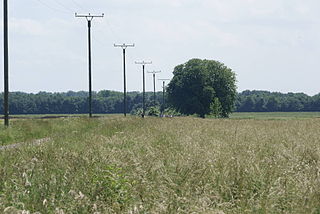
The Himmelgeister chestnut was a horse chestnut and stood in the field just outside the Himmelgeister Rheinbogen nature reserve in the Düsseldorf district of Himmelgeist. The free-standing tree had an estimated age of between 150 and 200 years. In 1997, this tree was declared a natural monument by the city of Düsseldorf. Since December 14, 2015, only a 5-meter-high piece of the trunk of the Himmelsgeister chestnut has existed, which has been converted into a sculpture.
37. Friedenskirche
The Friedenskirche is a Protestant church consecrated in 1899 on Florastraße in the Düsseldorf district of Unterbilk. Its neo-Gothic architecture is typical of sacred buildings of historicism, even though the building was changed or simplified in many parts after war damage.
38. Hungerturm
The Düsselthal Rescue Centre for orphans and street children was built in 1822 by Count Adelberdt von der Recke-Volmerstein as one of the first German institutions of its kind. It was built on the site of a Cistercian monastery. The monastery was a gift from the Elector Johann Wilhelm of the Palatinate to the Cistercians. The Spekkerhöfe used to found the monastery, named after the billet dams made of bacon, later gave the "Speckermönchen" their name. The street on which the monastery was located was named after Count Adelberdt von der Recke-Volmerstein, the founder of the rescue centre.
39. Herz-Jesu-Kirche
The Sacred Heart Church at Roßstraße 75 in Düsseldorf-Derendorf was built between 1905 and 1907 by the architect Josef Kleesattel and is the parish church of the Roman Catholic parish of the same name in the Archdiocese of Cologne, which has been merged into the Derendorf-Pempelfort parish association since 2009. In accordance with the Pastoral Reform Directive of the Archdiocese of Cologne, the parishes of this association in Düsseldorf-Derendorf and -Pempelfort will be merged into their original parish of the Holy Trinity on January 1, 2013.
40. Museum für Naturkunde
Schloss Benrath is a Baroque-style maison de plaisance in Benrath, which is now a borough of Düsseldorf. It was erected for the Elector Palatine Charles Theodor and his wife, Countess Palatine Elisabeth Auguste of Sulzbach, by his garden and building director Nicolas de Pigage. Construction began in 1755 and was completed in 1770. The ensemble at Benrath has been proposed for designation as a UNESCO World Heritage Site.
41. Rheinterrasse
The Rheinterrasse is a building with guest and meeting places, which was built between 1924 and 1926 according to plans by Wilhelm Kreis for the GeSoLei exhibition. It is located at Joseph-Beuys-Ufer 33 in Düsseldorf-Pempelfort.
Wikipedia: Rheinterrasse (Düsseldorf) (DE), Heritage Website
42. St. Suitbertus
The former collegiate church and today's parish church of St. Suitbertus is a flat-roofed, three-aisled pillar basilica in the Düsseldorf district of Kaiserswerth. The parish of the same name belongs to the Catholic parish community of Angerland/Kaiserswerth.
Wikipedia: St. Suitbertus (Düsseldorf-Kaiserswerth) (DE), Website, Heritage Website
43. St. Adolfus
The Catholic Church of St. Adolfus is located in Düsseldorf-Pempelfort, Kaiserswerther Straße 60. Cordoba Street, which runs along the south side of the church, is an indication that the church is dedicated to the Spanish martyr St. Adolphus, who, according to the priest Eulogius, was executed by the Emir of Córdoba in the 9th century.
Wikipedia: St. Adolfus (Düsseldorf-Pempelfort) (DE), Heritage Website
44. Schifffahrtsmuseum
The Maritime Museum in Düsseldorf shows one of the oldest collections on the history of Rhine navigation in Germany and has been housed in the historic castle tower on the banks of the Rhine since 1984.
Wikipedia: Schifffahrtsmuseum (Düsseldorf) (DE), Website, Website
45. St. Suitbertus
The church of St. Suitbertus at Suitbertusplatz 1 in the Düsseldorf district of Bilk was built in two construction phases in 1905–1906 and 1927. The Catholic church building has been a listed building since 1994.
Wikipedia: St. Suitbertus (Düsseldorf-Bilk) (DE), Website, Heritage Website
46. Villa Horion
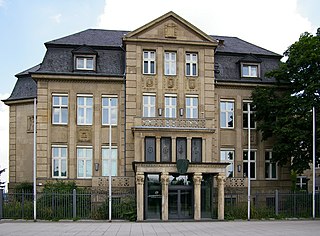
The Villa Horion on Johannes-Rau-Platz in Düsseldorf-Carlstadt was built at the same time as the neighbouring Landeshaus from 1909 to 1911 by the architect Hermann vom Endt in the Neoclassical style. The façade decoration, in particular two female relief figures, the "Fürsorge" and the "Landwirtschaft" were created by the sculptor Hermann Nolte. The listed building is located in the government district of the state capital. It is named after Johannes Horion, who resided here as governor of the Rhine Province. It currently houses the "House of Parliamentary History" of the North Rhine-Westphalian state parliament.
47. Burg Angermund
Angermund Castle, also known as Kellnerei or Alte Kellnerei, is a moated castle on the Angerbach in the Düsseldorf district of Angermund. It is located south of the historic town centre and is one of the most important architectural monuments in Düsseldorf.
48. St. Apollinaris
St. Apollinaris is a five-aisled Catholic hall church with an almost square floor plan in the Düsseldorf district of Oberbilk. The parish of the same name belongs to the pastoral care area of Unter- and Oberbilk, Friedrichstadt and Eller-West.
49. Stadthaus

The Düsseldorfer Stadthaus is located in Düsseldorf's old town on Mühlenstraße. It is bordered to the east by St. Andrew, to the south by Andreasstraße and to the west by Mertensgasse. The Stadthaus, as it was called especially after 1945, has an eventful history of construction and use behind it, which in turn is closely linked to the history of the city of Düsseldorf. Over the centuries, the house has been used as a monastery, school, observatory, government and administration building, police headquarters and Nazi memorial.
50. Schneidersches Geschäftshaus
The former Schneider office building in Düsseldorf's old town was built in 1896 or 1898 according to designs by the Düsseldorf architect Hermann vom Endt. On September 2, 1983, the corner house was placed under monument protection. On the ground floor of the building there is now a boutique.
Wikipedia: Schneidersches Geschäftshaus (DE), Heritage Website
51. Drahtzieherei Künne & Sohn
The Förderkreis Industriepfad Düsseldorf e.V. (FKI) is an association for researching the industrial history of Düsseldorf and the neighbouring region. The purpose of the association is the scientific processing and promotion of industrial culture, monument protection, monument preservation and cultural landscape protection. The association achieves this purpose by designing a path of local historical industrial development in Düsseldorf-Gerresheim and neighbouring Düsseldorf-Ludenberg, by marking industrial heritage sites throughout Düsseldorf and by supporting industrial heritage networks in the region.
Wikipedia: Förderkreis Industriepfad Düsseldorf-Gerresheim (DE), Website
52. Theatermuseum
The Theatermuseum Düsseldorf is a regionally oriented museum in the North Rhine-Westphalian state capital of Düsseldorf. It is housed in the so-called Hofgärtnerhaus in the historic Hofgarten in the immediate vicinity of the Düsseldorf Schauspielhaus and the Deutsche Oper am Rhein. In February 2017, the museum was placed on the Red List by the German Cultural Council and classified as Category 1 and thus threatened with closure.
53. Hubertuskapelle
The Hubertus Chapel is a baroque chapel in Düsseldorf-Angermund with the patronage of St. Hubertus, the patron saint of hunters. The chapel is located in the area of the parish of St. Remigius Wittlaer, deanery of Düsseldorf-Nord, and used to be used especially by hunters for church services and thanksgiving. Today, it is the only surviving example in the Düsseldorf city area of the castle chapels in front of medieval or baroque knights' seats, which were often found in the past.
54. Vater Rhein und seine Töchter
The fountain sculpture "Father Rhine and his Daughters" in Düsseldorf-Unterbilk was created by the sculptors Karl Janssen and Josef Tüshaus and unveiled on 7 March 1897. The monument is an allegory of the Rhine and represents the Prussian Rhine Province. It is located in front of their Ständehaus on an exedra that juts out into a body of water, the Kaiserteich.
55. St. Agnes
The Catholic Church of St. Agnes is located in Düsseldorf-Angermund. It was built as a parish church after the Thirty Years' War. The parish of the same name belongs to the Catholic pastoral care area Angerland - Kaiserswerth in the Düsseldorf city deanery of the Archdiocese of Cologne.
56. Haus Goldener Helm
Haus Goldener Helm is located at Flinger Straße 1 at the corner of Berger Straße in the Altstadt district of the North Rhine-Westphalian state capital Düsseldorf. On November 10, 1983, it was entered in the city's list of monuments in the category of residential and settlement buildings in the Baroque subcategory.
57. Franz-von-Sales-Kirche
The Franz-von-Sales-Kirche is a branch church of the Catholic parish of St. Maria Rosenkranz, built between 1969 and 1971 according to designs by the architect Hans Schwippert, in the Düsseldorf district of Oberbilk on the border with Wersten, to which it is ecclesiastically assigned.
Wikipedia: Franz-von-Sales-Kirche (Düsseldorf) (DE), Heritage Website
58. German Opera on the Rhine
The Deutsche Oper am Rhein is an opera company based in Düsseldorf and Duisburg. The opera also has an associated classical ballet company. Axel Kober has been its Music Director since 2009. The resident orchestra, the Düsseldorfer Symphoniker, play both opera and symphonic repertoire.
59. Scheidt-Weschpfennig
Haus Altestadt 14 in Düsseldorf is a listed building. The location, the street Altestadt, is one of the oldest in Düsseldorf. The statements of the various authors given under the following description are partly somewhat different in their details of the details. However, the most important statements are confirmed or specified by H. Ferber from Düsseldorf in his book of 1889. This applies in particular to the date of construction, some names of the various owners and the magnificent ceiling in one room.
60. Hofgärtnerhaus
The Hofgärtnerhaus is located on Jägerhofstraße within the Hofgarten in Düsseldorf. It is built in the Baroque style and houses the former Dumont-Lindemann Archive, today the theatre museum of the state capital. For the Baroness von Kö, the Court Gardener's House serves as the starting point for her city tours.
61. St. Antonius
The Catholic parish church of St. Antonius in the Düsseldorf district of Friedrichstadt was built in the neo-Romanesque style between 1905 and 1909 according to plans by the architects Wilhelm and Paul Sültenfuß. It belongs to the pastoral care area of Unter- and Oberbilk, Friedrichstadt and Eller-West in the Düsseldorf city deanery of the Archdiocese of Cologne.
62. Düsseldorfer Schauspielhaus

The Düsseldorfer Schauspielhaus is a theatre building and company in Düsseldorf. The present building with two major auditoria was designed by the architect Bernhard Pfau and built between 1965 and 1969. It opened in 1970.
63. St. Bruno
The Roman Catholic Church of St. Bruno is located at Kalkumer Straße 58 in the west of the Düsseldorf district of Unterrath. Their patronage is subordinate to Saint Bruno, who was born in Cologne, the founder of the Carthusian Order, who maintained a monastery in nearby Lichtenbroich until 1964. Until 1998, the church was the centre of the Roman Catholic parish of St. Bruno.
64. Florapark
The Florapark is one of the smaller parks in the state capital of Düsseldorf. Its total area is 3 hectares. It is located in the old south of the city, today in the south of the city center in the district of Unterbilk, not far from Friedrichstadt and Bilk.
65. St. Andreas
The Church of St. Andreas is a Roman Catholic parish church situated in the center of the German city of Düsseldorf. It is the priory church of the local community of Dominican Friars, who also administer the much older Collegiate Church of St Lambertus.
66. Alt St. Martin
The church of Alt St. Martin is the oldest church in Düsseldorf and at the same time the oldest surviving building in the state capital. The origins of the former Bilk parish church lie in Carolingian times. The church, originally built around the year 700 and rebuilt around the year 1000, presumably also served as a parish church for the then neighbouring community of Düsseldorf until 1206. In 1812, Alt St. Martin lost its function as the parish church of Bilk and was no longer used as a church for over a century. After war damage and several elaborate restorations, the Catholic parish of St. Bonifatius and the Protestant Lutheran parish now regularly celebrate services in Alt St. Martin.
67. St. Cäcilia
The Catholic parish church of St. Cecilia in Düsseldorf-Benrath is a three-aisled neo-Gothic church with a tower attached to the side, which was built in the late 19th century by the architect Wilhelm Sültenfuß. Earlier church buildings on the same site can be traced back to 1005. The parish of the same name forms the parish of Benrath-Urdenbach with the Sacred Heart parish in Urdenbach.
Wikipedia: St. Cäcilia (Düsseldorf-Benrath) (DE), Website, Heritage Website
68. Altes Rathaus
The old town hall in Düsseldorf is the wing on the northern side of the market square and the oldest part of the town hall complex in the old town of Düsseldorf. It was built in the style of the Renaissance between 1570 and 1573 as the office and meeting place for mayors, Schöffen and the city council. Until 1806, the town hall also served as the meeting place of the lands of the Duchy of Jülich-Berg. Previously, a house had been used as a town hall since 1544, which had been on the same place on the market square and had gradually become dilapidated. Before that, the house “Zum Schwarzen Horn” at Ratinger Straße 6 had served as a town hall since 1470. In the construction of the town hall of 1573, the upward development of the city is expressed under the Märkische Duken von Jülich-Kleve-Berg. Under Wilhelm, she experienced a considerable expansion as a preferred residence city. Nevertheless, the city had great effort to raise the funds for the construction costs and had to tackle the sovereign for help several times.
Wikipedia: Altes Rathaus (Düsseldorf) (DE), Heritage Website
69. Robert Schumann-Haus
The Schumannhaus at Bilker Straße 15 in Düsseldorf's Carlstadt was the last joint residence of Robert and Clara Schumann and at the same time the only one in Germany that has been preserved in its historic structure. The building, built in 1795, housed the Schumann Memorial from 2003 to 2018 and, after renovation and new extension, has reopened as the Schumann Museum since 1 December 2023.
70. Peter von Cornelius
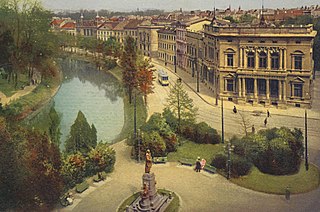
The Peter von Cornelius Monument is a historicist monument in Düsseldorf, located as a point de vue of Königsallee and Corneliusplatz on the edge of the Hofgarten. The statue honours the painter Peter von Cornelius, the first director of the Royal Prussian Art Academy in Düsseldorf and the co-founder of the Düsseldorf School of Painting. It was designed by the sculptor Adolf von Donndorf and inaugurated on 24 June 1879 in the presence of Prince Wilhelm of Prussia. At a celebration that followed in the evening in the Malkastenpark, a procession with figures based on paintings by Cornelius was performed to the sounds of the Midsummer Night's Dream Overture by Felix Mendelssohn Bartholdy and the Malkasten Timpani March by Julius Tausch.
71. St. Nikolaus
The Roman Catholic parish church of St. Nikolaus is one of the three oldest churches in Düsseldorf and is located in the Himmelgeist district. The parish of the same name belongs to the pastoral care unit Düsseldorfer Rheinbogen.
72. Atelierhaus
The studio house for "young still unmarried painters and sculptors" at Franz-Jürgens-Straße 12 in Düsseldorf-Golzheim was built in 1936/37 according to a design by Hans Junghanns in the style of the home protection architecture. The building ensemble, which is designed as the "artist community center with 12 studios and an exhibition room", is owned by the city of Düsseldorf and is part of a "artist settlement" with sample buildings of the Reich exhibition from 1937, which also includes today's north park and other facilities Name "Settlement creating people" and then "Schlagterstadt" led. In the course of the Reich exhibition, the area of the so -called "New Art Academy" with 52 artist apartments and studios in favor of exhibition halls was planned northwest. The "artist settlement" on today's Franz-Jürgens-Straße offered a replacement for only 22 of the artists. It has been listed as part of the monument area "Golzheimer Settlement" since 2014.
Wikipedia: Atelierhaus für „junge noch unverheiratete Maler und Bildhauer“ (DE)
73. Palais Schaesberg
The Palais Schaesberg at Ritterstraße 16–16a in Düsseldorf is a listed building. The building is now part of the Ursula Gymnasium complex. With its "clear proportions and elaborately designed window surrounds", it is reminiscent of the façade of Bensberg Castle, the main work of the court architect Matteo Alberti, and was attributed to him before Simon Sarto could be identified as the architect after evaluation of documents from the Schaesberg archive.
74. St. Albertus Magnus
The Catholic Church of St. Albertus Magnus in Düsseldorf-Golzheim was built in 1938 on Kaiserswerther Straße, consecrated in 1939 as the first parish church in Golzheim, but was not finally completed until 1974. It belongs to the parish of the Holy Family in the Düsseldorf city deanery of the Archdiocese of Cologne.
75. Wildpark am Grafenberger Wald
With its size of 36 hectares, the wildlife park in the Grafenberg Forest is one of the larger parks in Düsseldorf. It is one of the oldest wildlife parks in Germany and shows only native animal species. The animals' free-range areas and enclosures are home to a beech forest that is more than 200 years old.
76. Monumento
Monumento, also known as Rumor de límites IX, is the title of a sculpture by the Spanish sculptor Eduardo Chillida. It is the first and first larger sculpture by the artist made of steel to be erected in Germany. To mark the 100th anniversary of the rolled steel factory Thyssen & Co., founded by August Thyssen, the property was donated to the city of Düsseldorf, the headquarters of one of the company's successors, and unveiled on July 8, 1971 in a green area at the Dreischeibenhaus in Düsseldorf-Stadtmitte.
77. NRW-Forum Düsseldorf
The NRW Forum Wirtschaft und Kultur, formerly the Museum für Industrie und Wirtschaft, is a museum in Düsseldorf, the state capital of North Rhine-Westphalia, dealing with the development and the economy of the state of North Rhine-Westphalia or regions within it, such as the Rhine-Ruhr-region. Today it is part of the Museum Kunstpalast.
78. St. Norbert
The Catholic Church of St. Norbert in the northwest of the Düsseldorf district of Düsseldorf-Garath was built in 1966/68 according to plans by Gerhard Nitschke and has been a branch church of the parish of St. Matthäus since 2007.
79. Dankeskirche
The Dankeskirche is a Protestant church in Düsseldorf-Benrath, Germany. It belongs to the Evangelical Church of the Rhineland, along with the Adoration Church, to the Protestant parish of Benrath/Hassels in the Düsseldorf church district of the Evangelical Church in the Rhineland.
Wikipedia: Dankeskirche (Benrath) (DE), Website, Heritage Website
80. Lieferhaus
The Löwenhaus or, as the house inscription says, Lieferhaus, Liefergasse 9 in Düsseldorf, is a listed building. It is the oldest secular building in Düsseldorf in Stein; the building core is Gothic.
81. St. Elisabeth
The Roman Catholic Church of St. Elisabeth, also known as St. Elisabeth's Church, is located on Vinzenzplatz in Düsseldorf-Stadtmitte and bears the patronage of St. Elisabeth of Thuringia. It is the only church in the city built into a row of houses and has been a listed building since 1983.
82. Mariensäule

The Marian Column in the Düsseldorf district of Carlstadt is a neo-Romanesque column with a statue of Mary on its top. It stands on a pedestal in a small garden planted with roses and characterises the Maxplatz there.
83. Herz-Jesu-Kirche
The Catholic Sacred Heart Church in Düsseldorf-Urdenbach is a three-nave, neo-Romanesque basilica, the construction of which began in 1893. The Sacred Heart Parish, which has existed since 1906, today forms the Benrath-Urdenbach parish association together with St. Cecilia.
84. Jan-Wellem-Denkmal
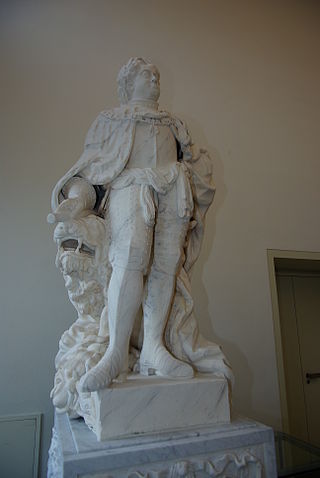
The Jan Wellem monument in Düsseldorf's town hall was completed by the sculptor Gabriel de Grupello after 1697/before 1708. The marble statue depicts Johann Wilhelm von Pfalz-Neuburg, called Jan Wellem, Elector Palatine and Duke of Jülich-Berg by the people of Düsseldorf, who spoke Lower Franconian at the time.
Wikipedia: Jan-Wellem-Denkmal (Düsseldorf) (DE), Heritage Website
85. Kriegerdenkmal im Hofgarten
The war memorial in the Hofgarten in Düsseldorf's city centre stands on the Landskrone, the landscape remodelled remnant of the former city fortifications in the Hofgarten. The monument was created by Karl Hilgers (1844–1925) after he had won an artist's competition with his design "Vaterstadt", which had been announced by the "Committee for the Erection of a War Memorial". The monument was inaugurated on 18 October 1892. It is dedicated to fallen Düsseldorf soldiers of the German Wars of Unification (1864–66) and the Franco-German War (1870/71).
86. Kolpingplatz
Kolpingplatz, also spelled Kolping-Platz, formerly Clever Platz, is a park and square in Düsseldorf-Pempelfort, which is used above ground as a green space, playground and marketplace as well as below ground for an underground car park. The town square, which is about 100 metres wide and a good 150 metres long and is laid out on a rectangular ground plan, is bordered to the north by Klever Straße, to the east by Mauerstraße, to the south by Pfalzstraße and to the west by Schwerinstraße. After the Second World War, the city of Düsseldorf named the square after the Catholic priest Adolph Kolping, who was active in social reform. He is commemorated on the east side of the square as a Kolping monument by a sculpture made of Roman travertine by Hermann Isenmann, erected in 1954, which shows the "Father Kolping – Apostle of the Family" in a group of figures with a working-class family.
87. Tersteegenkirche
The Tersteegenkirche is a Protestant church building in Düsseldorf-Golzheim at Tersteegenplatz 1. It was built between 1957 and 1958 and inaugurated on June 29, 1958. To this day, it is regularly used for church services and concerts. The church is named after the pietist preacher, pastor and writer Gerhard Tersteegen. The owner is the Evangelical Tersteegen parish in the Düsseldorf church district of the Evangelical Church in the Rhineland, a congregation of around 2000 members today.
88. St. Remigius
The Catholic parish church of St. Remigius in Düsseldorf-Wittlaer is a Romanesque basilica from the 12th or 13th century, which emerged from a hall church. The parish of the same name belongs to the Catholic parish community of Angerland/Kaiserswerth.
89. Haus der Universität
The Haus der Universität at Schadowplatz 14 in Düsseldorf is an institution of the Heinrich Heine University in Düsseldorf. It was opened on 20 September 2013. Public events, conferences, exhibitions and student counselling take place there during opening hours from Monday to Saturday between 10 a.m. and 6 p.m. In addition, there is a service of the University and State Library Düsseldorf for researching scientific literature. With the new building and its facility in the city centre district, the university, whose campus is rather peripheral in the Bilk district, will have the opportunity to offer its information services in a more central location and thus more accessible to the public.
90. Wasserträgerin
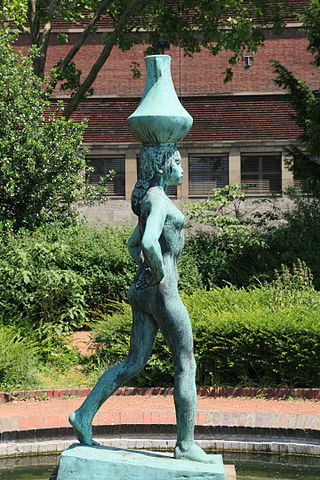
The Nubian Woman is a bronze statue by the sculptor Bernhard Sopher. The figure depicts an unclothed Nubian woman in a striding posture. She carries a vase on her head. The arms are bent, the outside of the hands are placed on the hips.
91. Christuskirche
The Christuskirche is a Protestant church consecrated in 1899 on Kruppstraße in Düsseldorf-Oberbilk. Its neo-Gothic architecture is typical of sacred buildings of historicism, even though the building was changed or simplified in many parts after war damage.
92. St. Martin
The Catholic Martinskirche, also called Bilker Church, stands in Düsseldorf-Unterbilk and is the parish church of the parish of St. Martin, which belongs to the pastoral area Unter- and Oberbilk, Friedrichstadt and Eller-West. The building, which was blown up during the war, was stylistically related to the Suitbertuskirche.
Wikipedia: Martinskirche (Düsseldorf-Unterbilk) (DE), Website
93. Düsseldorf-Benrath
Düsseldorf-Benrath station is about 10 kilometres south of Düsseldorf Hauptbahnhof in the Düsseldorf district of Benrath. It is on the Cologne–Duisburg line, and is classified by Deutsche Bahn as a category 3 station. In addition, Düsseldorf Benrath station is served by two Regional-Express services, several city bus services and two Stadtbahn lines. Benrath is the busiest station after Düsseldorf Hauptbahnhof in Düsseldorf with about 25,000–30,000 daily entries and exits.
Wikipedia: Düsseldorf-Benrath station (EN), Heritage Website
94. Stephanuskirche
Wersten is a quarter (Stadtteil) of Düsseldorf located in Borough 9 of the city. It is south of Eller and Oberbilk, east of Bilk, and north of Holthausen. It has an area of 4.42 km2 (1.71 sq mi), and 27,151 inhabitants (2020). It has been a part of Düsseldorf since 1909.
95. Große Mannesmann
The Große Mannesmann, also known as Mannesmann I or Movement, is a sculpture by the sculptor Norbert Kricke. It was created from 1958 onwards in the context of informal art as a commissioned work for Mannesmann AG and was erected in 1961 on its forecourt at the Mannesmann high-rise in Düsseldorf. Together with the high-rise, the property has been a listed building since 1997.
96. St. Josef
The Catholic Church of St. Josef is located in Düsseldorf-Oberbilk. It was once the parish church of the largest community in the Archdiocese of Cologne. Today, the parish belongs to the pastoral care area of Unter- and Oberbilk, Friedrichstadt and Eller-West.
97. Maria-Obhut-Kirche
The Maria-Obhut-Kirche is a listed building of the Berlin Diocese of the Russian Orthodox Church at Ellerstraße 213 in Düsseldorf-Oberbilk. It was built in 1883 by P. Stullenberg as a monastery of the "Poor Handmaids of Jesus Christ".
98. St. Dionysius
The Catholic parish church of St. Dionysius is located in Düsseldorf-Volmerswerth. It was built between 1854 and 1855 according to plans by the architect Vincenz Statz, the bell tower in 1865/66 by Friedrich Weise.
99. Petruskirche
The Protestant Petruskirche is located in Düsseldorf-Unterrath, Am Röttchen 10. It belongs to the Protestant parish of Unterrath–Lichtenbroich in the Düsseldorf church district of the Evangelical Church in the Rhineland.
100. Neanderkirche
The Neanderkirche is a Protestant church in the centre of Düsseldorf, the Altstadt. The building in early Baroque style was completed in 1687 and later named after the Reformed minister and hymn writer Joachim Neander. It is now a parish church of the Evangelische Kirchengemeinde Düsseldorf-Mitte. In 1965, a Rieger organ was installed, which is also used for a series of summer concerts.
Share
How likely are you to recommend us?
Disclaimer Please be aware of your surroundings and do not enter private property. We are not liable for any damages that occur during the tours.

